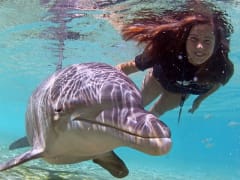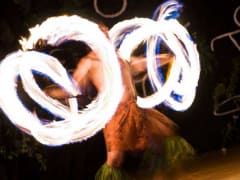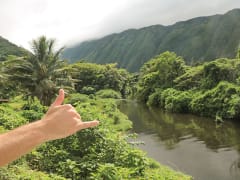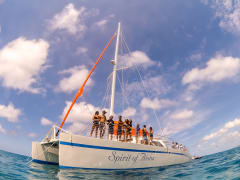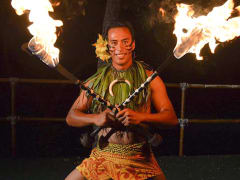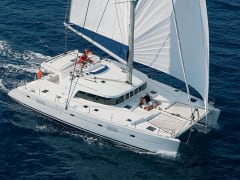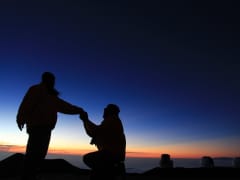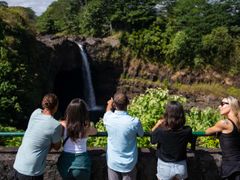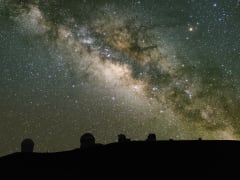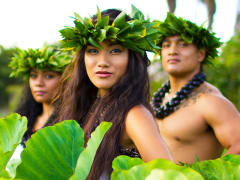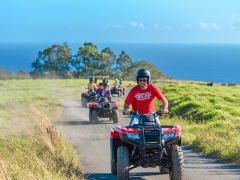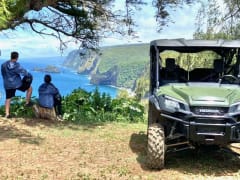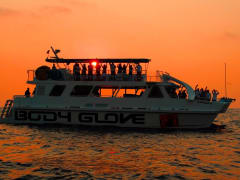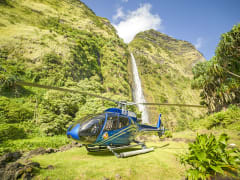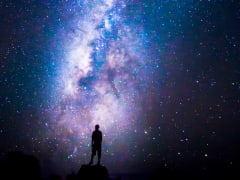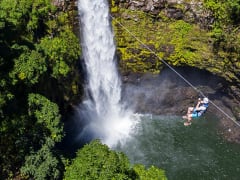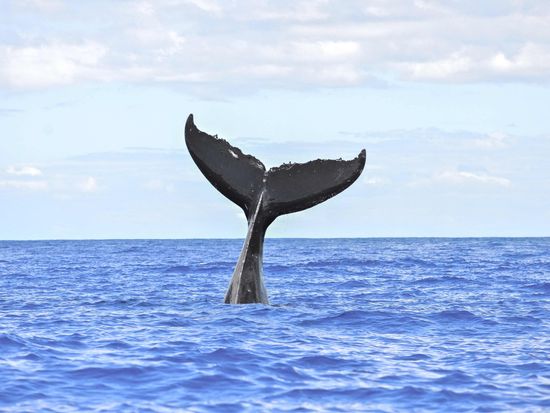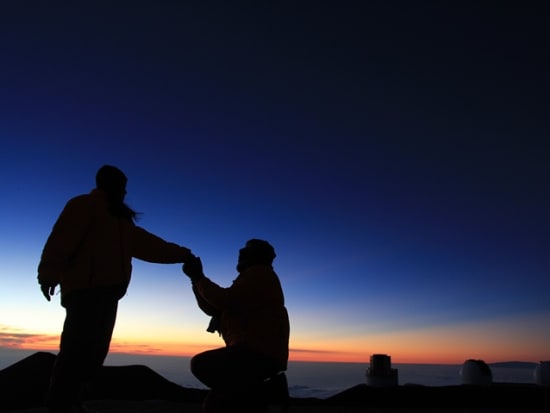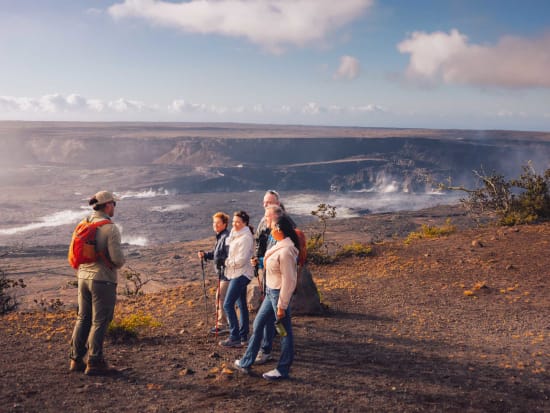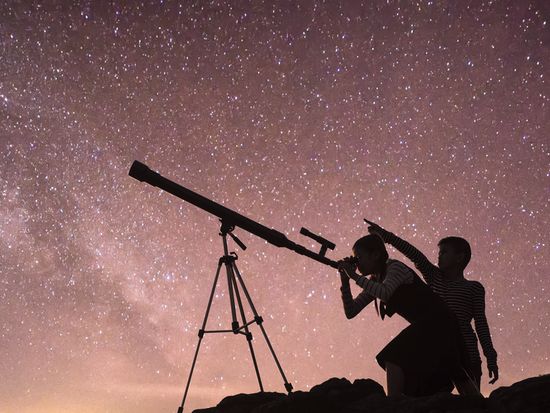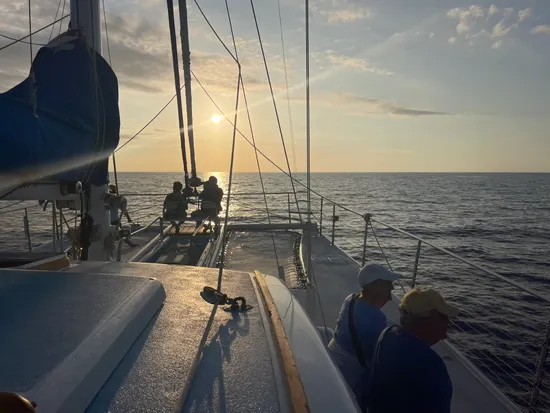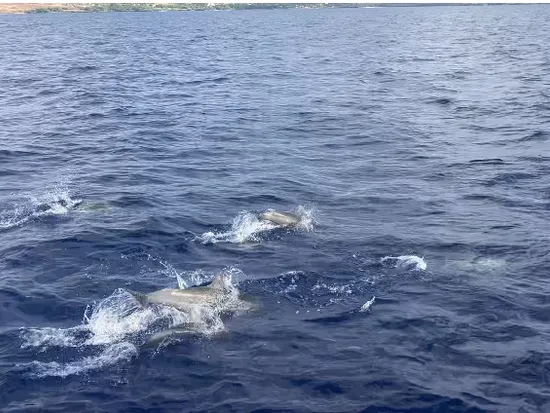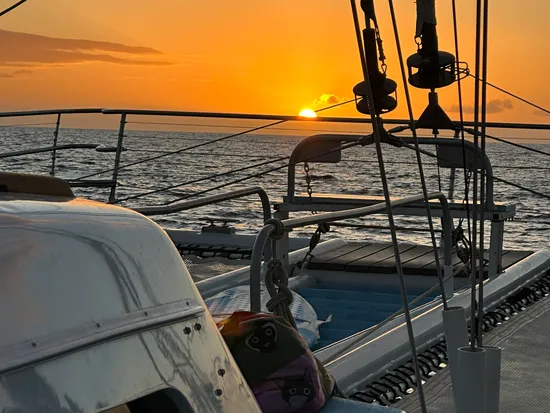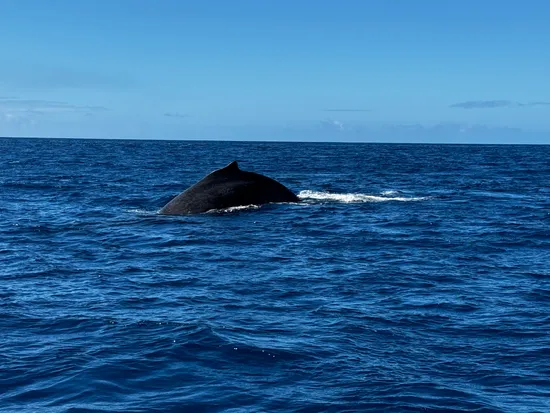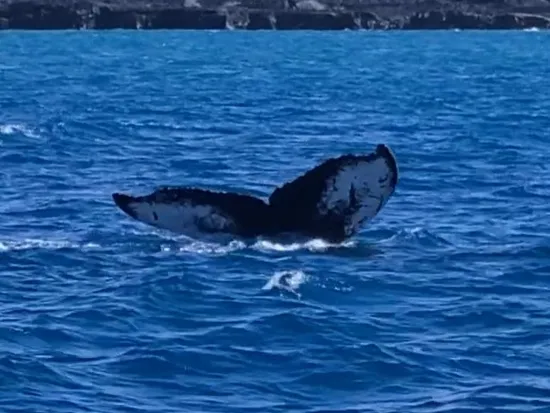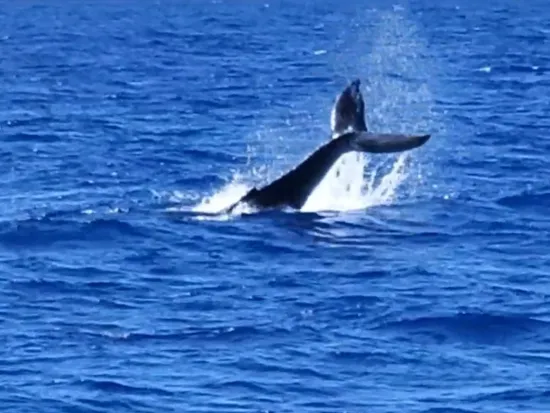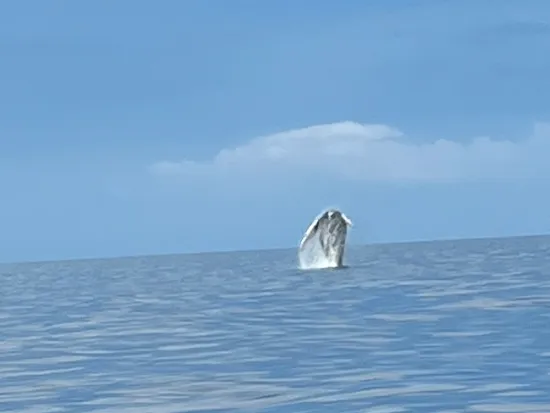See whales on the best Big Island whale watching tours this winter, and watch as the Pacific humpback whales rest and play after traveling from Alaska to Hawaii. December and April is whale watching season on the Big Island, and the ocean becomes the winter home for humpback whales and their calves that are born in the island's warm waters, and with whale watching cruises, boat rides, and sails departing from Kona, Waikoloa, and Hilo, there is a whale watching experience perfect for everyone.
Every winter approximately 10,000 to 12,000 humpback whales travel to Hawaii from Alaska to Hawaii during their mating and calving season, and from November to May, you will often see these massive marine mammals in the warm waters surrounding the islands of Hawaii.
Although the protected oceanic areas known as the Humpback Whale National Marine Sanctuary are mainly found between the islands of Maui, Molokai and Lanai, the Big Island of Hawaii is also a popular destination for humpback whales, and they can be found off the shores of Kailua-Kona, Waikoloa, and Hilo.
Big Island whale watching tours are available for only a limited amount of time, and should not be missed by anyone on the island during the winter whale watching season.
More details can be found in our
Hawaii Whale Watching Guide!
- Humpback whales travel annually between Hawaii and Alaska to both give birth and raise their young in the warm waters off the islands of Hawaii. Once the calves have become bigger and stronger, the humpback whale pods return to Alaska for spring and summer.
- Adult humpback whales do not eat while they are in Hawaii, and female humpback whales expend tons of energy feeding their calf during their Hawaiian visit.
- Humpback whales spend most of their time underwater, but stay on and just below the ocean’s surface for approximately 15 minutes. If they are feeling energetic, you can sometimes see them jump or breach out of the water, and even slap their tails and fins on the water.
- You will want to catch sight of humpback whales as quickly as possible once they surface since they can stay underwater for up to an hour with lungs as large as a small car.
- Once a humpback whale calf is born, they gain around 100 lbs a day while their mothers nurse them, and marine biologists and ocean conservationists track the calve’s progress before they head back to Alaska.
- While humpback whale calves grow exponentially while in Hawaii, adult humpback whales are quite the opposite. They will normally lose around 25% of their body weight during their stay in Hawaii, and need to return to Alaska to feed.
- Many Big Island whale watching cruise boats come equipped with hydrophones which will allow you to hear the famous whale songs of the humpback whales. Male humpback whales all sing the same complex whale song throughout the season, and then pick-up the following season where the previous song left off.
- While beautiful whale songs are special in their own way, scientists do not have a definitive reason as to why the humpback whales sing, but it is said that whales sing to communicate, locate food, and find each other.
- Guests who are prone to motion sickness should plan on taking a motion sickness preventative at least one hour prior to departure.
- Many of the top Big Island whale watching tours book up days or weeks in advance. Be sure to book whale watching tours as early as possible to ensure a spot on the boat.
- Keep an eye out for the following humpback whale behaviors on the Big Island: A spout of water from the blowhole which will look like a spray from the ocean’s surface, whale tails or fins coming up from the water, or an epic partial or full breech where they will propel themselves out of the water to belly flop onto the surface.
- Be patient during your Big Island whale watching cruise, and keep your eye out for irregularities on the water. You will never know when humpback whales will make their presence known, and if the humpback whales do not make an appearance during your cruise, enjoy your time in Hawaii’s waters.
- Federal laws require that all boats and persons stay at least 100 yards away from humpback whales at all times. Sometimes whales become curious and will swim to a boat, and the boats are required to turn off their engines and wait till the humpback whale moves away.
- The best time for whale watching tours on the Big Island is often during the morning and afternoon since the ocean and winds are much calmer at this time. This is not to say that humpback whales cannot be seen during dusk and sunset, and depending on how active the calves are, they can be quite playful throughout the day.
For the best whale watching on the Big Island, book whale watching cruises from Kona, Waikoloa, and Hilo. Each of the areas offers unique views and amazing opportunities to see Hawaii’s winter visitors.
- Kona Whale Watching Tours: Cruises will depart from Kona and Honokohau Pier.
- Waikoloa & Kohala Whale Watching Tours: These tours take place along the northwest coast of the Big Island, and depart from Anaehoomalu Bay.
- Hilo Whale Watching Tours: Taking place on the Big Island’s western shore, home to the Hawaii Volcanoes National Park, the Hilo tours depart from the Hilo Pier.
There are a variety of different boats to choose from, and each offers a unique experience to see humpback whales on Maui.
- Large single hull, multi-level cruise liner-type mega boat that can accommodate hundreds of guests per cruise.
- Moderately-sized catamarans that can both be under sail and cruise using an engine, and can accommodate around 30 to 50 passengers at a time.
- Mono-hulled sailboats that can quickly skim the surface of the water, and will rarely use an engine and ensure a calm and quiet whale watching experience.
- Speedy Zodiac and Radon style boats will keep you close to the ocean surface, and quickly get you in range of any spotted humpback whales.
- Single or tandem kayaks are great for the athletic and the adventurous, and are also the most eco-friendly way of seeing Oahu humpback whales.
Q: Are whale sightings guaranteed on the Big Island?
A: While there is a very high likelihood of seeing humpback whales during a Big Island whale watching cruise, there are no guarantees that you will see a whale on your tour. Some companies do offer “whale guarantees” and if whales are not seen, you can go back on the cruise or sail until you do see them.
Q: What is the best month for whale watching on the Big Island?
A: Whale watching season is between November and April on Maui, and December, January and February are the best months to see humpback whales in Hawaii.
Q: Which island is best for whale watching in Hawaii?
A: While the areas designated as the Hawaiian Islands Humpback Whale National Marine Sanctuary are primarily located between the islands of Maui, Molokai and Lanai, humpback whales can be seen off the coasts of Oahu, the Big Island and Kauai as well.
Q: Where is the best place for whale watching on the Big Island?
A: The west and northwest shores of the Big Island are a part of the Hawaiian Islands Humpback Whale National Marine Sanctuary, but humpback whales can also be found off the east coast of the Big Island.
Q: What time of day are Big Island humpback whales the most active?
A: Humpback whales in Hawaii are active throughout the day when they are in Hawaii, and while you can see them in the morning, afternoon, and early evening, ocean and wind conditions are normally calmer during the day.
![]() United States DollarUSD
United States DollarUSD![]() Canadian DollarCAD
Canadian DollarCAD![]() Australian DollarAUD
Australian DollarAUD![]() New Zealand DollarNZD
New Zealand DollarNZD![]() Pound SterlingGBP
Pound SterlingGBP![]() EuroEUR
EuroEUR![]() Bulgarian LevBGN
Bulgarian LevBGN![]() Brazilian RealBRL
Brazilian RealBRL![]() Chinese YuanCNY
Chinese YuanCNY![]() Croatian KunaHRK
Croatian KunaHRK![]() Czech KorunaCZK
Czech KorunaCZK![]() Danish KroneDKK
Danish KroneDKK![]() Egyptian PoundEGP
Egyptian PoundEGP![]() Hong Kong DollarHKD
Hong Kong DollarHKD![]() Hungarian ForintHUF
Hungarian ForintHUF![]() Indian RupeeINR
Indian RupeeINR![]() Indonesian RupiahIDR
Indonesian RupiahIDR![]() Malaysian RinggitMYR
Malaysian RinggitMYR![]() Mexican PesoMXN
Mexican PesoMXN![]() Moroccan DirhamMAD
Moroccan DirhamMAD![]() New Taiwan DollarTWD
New Taiwan DollarTWD![]() Norwegian KroneNOK
Norwegian KroneNOK![]() Philippine PesoPHP
Philippine PesoPHP![]() Polish ZłotyPLN
Polish ZłotyPLN![]() Romanian LeuRON
Romanian LeuRON![]() Russian RubleRUB
Russian RubleRUB![]() Saudi RiyalSAR
Saudi RiyalSAR![]() Singapore DollarSGD
Singapore DollarSGD![]() South African RandZAR
South African RandZAR![]() South Korean WonKRW
South Korean WonKRW![]() Swedish KronaSEK
Swedish KronaSEK![]() Swiss FrancCHF
Swiss FrancCHF![]() Thai BahtTHB
Thai BahtTHB![]() Ukrainian HryvniaUAH
Ukrainian HryvniaUAH![]() United Arab Emirates DirhamAED
United Arab Emirates DirhamAED![]() Vietnamese DongVND
Vietnamese DongVND
![]() United States DollarUSD
United States DollarUSD![]() Canadian DollarCAD
Canadian DollarCAD![]() Australian DollarAUD
Australian DollarAUD![]() New Zealand DollarNZD
New Zealand DollarNZD![]() Pound SterlingGBP
Pound SterlingGBP![]() EuroEUR
EuroEUR![]() Bulgarian LevBGN
Bulgarian LevBGN![]() Brazilian RealBRL
Brazilian RealBRL![]() Chinese YuanCNY
Chinese YuanCNY![]() Croatian KunaHRK
Croatian KunaHRK![]() Czech KorunaCZK
Czech KorunaCZK![]() Danish KroneDKK
Danish KroneDKK![]() Egyptian PoundEGP
Egyptian PoundEGP![]() Hong Kong DollarHKD
Hong Kong DollarHKD![]() Hungarian ForintHUF
Hungarian ForintHUF![]() Indian RupeeINR
Indian RupeeINR![]() Indonesian RupiahIDR
Indonesian RupiahIDR![]() Malaysian RinggitMYR
Malaysian RinggitMYR![]() Mexican PesoMXN
Mexican PesoMXN![]() Moroccan DirhamMAD
Moroccan DirhamMAD![]() New Taiwan DollarTWD
New Taiwan DollarTWD![]() Norwegian KroneNOK
Norwegian KroneNOK![]() Philippine PesoPHP
Philippine PesoPHP![]() Polish ZłotyPLN
Polish ZłotyPLN![]() Romanian LeuRON
Romanian LeuRON![]() Russian RubleRUB
Russian RubleRUB![]() Saudi RiyalSAR
Saudi RiyalSAR![]() Singapore DollarSGD
Singapore DollarSGD![]() South African RandZAR
South African RandZAR![]() South Korean WonKRW
South Korean WonKRW![]() Swedish KronaSEK
Swedish KronaSEK![]() Swiss FrancCHF
Swiss FrancCHF![]() Thai BahtTHB
Thai BahtTHB![]() Ukrainian HryvniaUAH
Ukrainian HryvniaUAH![]() United Arab Emirates DirhamAED
United Arab Emirates DirhamAED![]() Vietnamese DongVND
Vietnamese DongVND







































![Big Island Whale Watching Cruise from Waikoloa - Hawaii Nautical [Dec-Mar]-0](https://cdn2.veltra.com/ptr/20200831213830_2100663985_15150_0.jpg?imwidth=550&impolicy=custom)
![Big Island Whale Watching Cruise from Waikoloa - Hawaii Nautical [Dec-Mar]-1](https://cdn2.veltra.com/ptr/20200831213831_1778622714_15150_0.jpg?imwidth=550&impolicy=custom)
![Big Island Whale Watching Cruise from Waikoloa - Hawaii Nautical [Dec-Mar]-2](https://cdn2.veltra.com/ptr/20200831213830_1817258823_15150_0.jpg?imwidth=550&impolicy=custom)
![Big Island Whale Watching Cruise from Waikoloa - Hawaii Nautical [Dec-Mar]-3](https://cdn2.veltra.com/ptr/20200829024933_1474936002_15150_0.jpg?imwidth=550&impolicy=custom)
![Big Island Whale Watching Cruise from Waikoloa - Hawaii Nautical [Dec-Mar]-4](https://cdn2.veltra.com/ptr/20200831213831_761985136_15150_0.jpg?imwidth=550&impolicy=custom)
![Kohala Whale Watching Tour by Ocean Sports | Kids 0-5 Ride for Free [Dec - Mar]-0](https://cdn2.veltra.com/ptr/20180927203429_1578747884_1170_0.jpg?imwidth=550&impolicy=custom)
![Kohala Whale Watching Tour by Ocean Sports | Kids 0-5 Ride for Free [Dec - Mar]-1](https://cdn2.veltra.com/ptr/20171122022040_1422001349_1170_0.jpg?imwidth=550&impolicy=custom)
![Kohala Whale Watching Tour by Ocean Sports | Kids 0-5 Ride for Free [Dec - Mar]-2](https://cdn2.veltra.com/ptr/20171122022410_1978336997_1170_0.jpg?imwidth=550&impolicy=custom)
![Kohala Whale Watching Tour by Ocean Sports | Kids 0-5 Ride for Free [Dec - Mar]-3](https://cdn2.veltra.com/ptr/20180927203411_1192315042_1170_0.jpg?imwidth=550&impolicy=custom)
![Kohala Whale Watching Tour by Ocean Sports | Kids 0-5 Ride for Free [Dec - Mar]-4](https://cdn2.veltra.com/ptr/20171122023455_1784910098_1170_0.jpg?imwidth=550&impolicy=custom)
![Kohala Sunset Whale Watching Cruise with Open Bar - Ocean Sports [Dec - Mar]-0](https://cdn2.veltra.com/ptr/20230111024608_966275143_1170_0.jpg?imwidth=550&impolicy=custom)
![Kohala Sunset Whale Watching Cruise with Open Bar - Ocean Sports [Dec - Mar]-1](https://cdn2.veltra.com/ptr/20180927203430_661643639_1170_0.jpg?imwidth=550&impolicy=custom)
![Kohala Sunset Whale Watching Cruise with Open Bar - Ocean Sports [Dec - Mar]-2](https://cdn2.veltra.com/ptr/20230111024608_922763383_1170_0.jpg?imwidth=550&impolicy=custom)
![Kohala Sunset Whale Watching Cruise with Open Bar - Ocean Sports [Dec - Mar]-3](https://cdn2.veltra.com/ptr/20180927203417_20690229_1170_0.jpg?imwidth=550&impolicy=custom)
![Kohala Sunset Whale Watching Cruise with Open Bar - Ocean Sports [Dec - Mar]-4](https://cdn2.veltra.com/ptr/20180927203418_1266454608_1170_0.jpg?imwidth=550&impolicy=custom)
![Big Island Afternoon Whale Watch Tour from Kona - Body Glove Cruises [Dec - Mar]-0](https://cdn2.veltra.com/ptr/20200220204234_1894838056_56_0.jpg?imwidth=550&impolicy=custom)
![Big Island Afternoon Whale Watch Tour from Kona - Body Glove Cruises [Dec - Mar]-1](https://cdn2.veltra.com/ptr/20200220204233_1958814268_56_0.jpg?imwidth=550&impolicy=custom)
![Big Island Afternoon Whale Watch Tour from Kona - Body Glove Cruises [Dec - Mar]-2](https://cdn2.veltra.com/ptr/20200220204234_893240773_56_0.jpg?imwidth=550&impolicy=custom)
![Big Island Afternoon Whale Watch Tour from Kona - Body Glove Cruises [Dec - Mar]-3](https://cdn2.veltra.com/ptr/20200220204234_444599994_56_0.jpg?imwidth=550&impolicy=custom)
![Big Island Afternoon Whale Watch Tour from Kona - Body Glove Cruises [Dec - Mar]-4](https://cdn2.veltra.com/ptr/20171122023835_1060650637_56_0.jpg?imwidth=550&impolicy=custom)
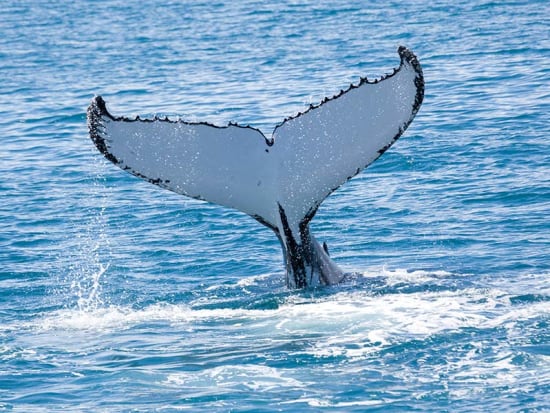
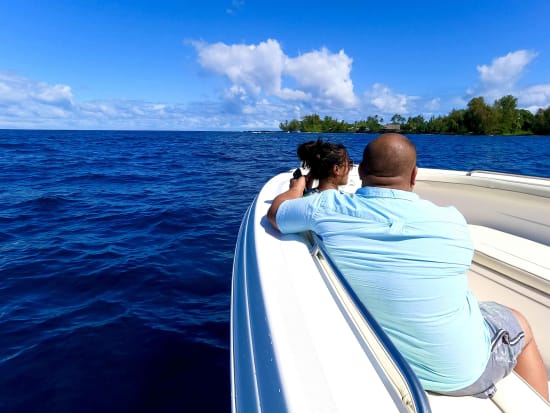
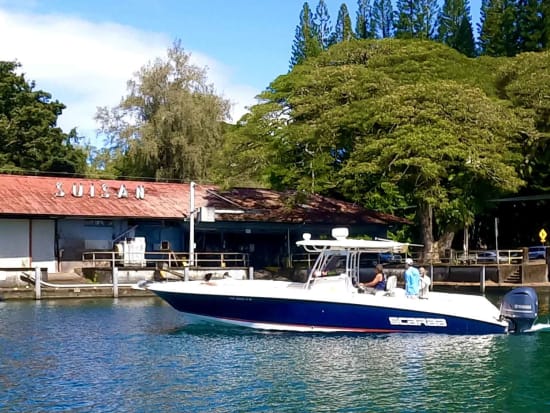
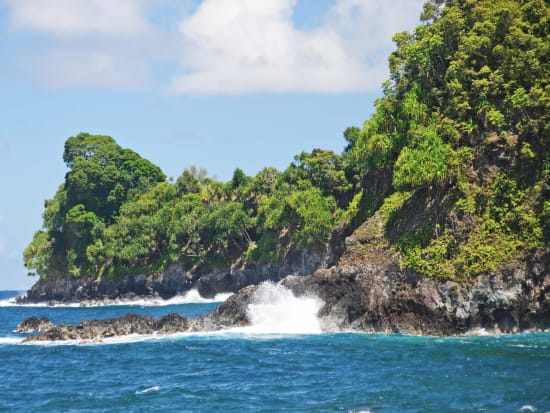
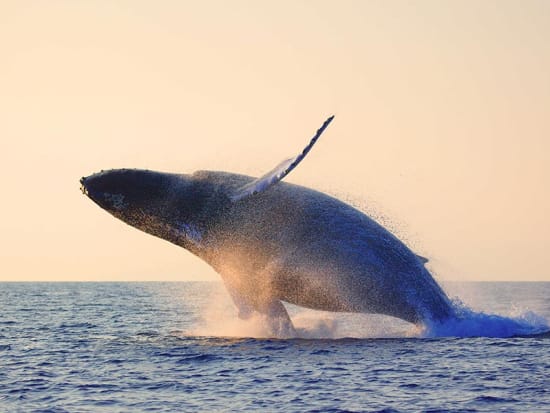
![2.5-Hour Ocean Encounter Whale Watching Cruise from Honokohau Harbor [Dec-Mar]-0](https://cdn2.veltra.com/ptr/20230109235845_2038642610_2325_0.jpg?imwidth=550&impolicy=custom)
![2.5-Hour Ocean Encounter Whale Watching Cruise from Honokohau Harbor [Dec-Mar]-1](https://cdn2.veltra.com/ptr/20171122025214_1535704763_2325_0.jpg?imwidth=550&impolicy=custom)
![2.5-Hour Ocean Encounter Whale Watching Cruise from Honokohau Harbor [Dec-Mar]-2](https://cdn2.veltra.com/ptr/20230109235608_167990537_2325_0.jpg?imwidth=550&impolicy=custom)
![2.5-Hour Ocean Encounter Whale Watching Cruise from Honokohau Harbor [Dec-Mar]-3](https://cdn2.veltra.com/ptr/20171122024529_1774823998_2325_0.jpg?imwidth=550&impolicy=custom)
![2.5-Hour Ocean Encounter Whale Watching Cruise from Honokohau Harbor [Dec-Mar]-4](https://cdn2.veltra.com/ptr/20230109235845_1451888156_2325_0.jpg?imwidth=550&impolicy=custom)
![2.5-hour Dolphins & Whale Watch Raft Adventure Tour from Keauhou Bay [Dec-Mar]-0](https://cdn2.veltra.com/ptr/20191206215410_478313013_2781_0.jpg?imwidth=550&impolicy=custom)
![2.5-hour Dolphins & Whale Watch Raft Adventure Tour from Keauhou Bay [Dec-Mar]-1](https://cdn2.veltra.com/ptr/20140214193151_1253847360_2781_0.jpg?imwidth=550&impolicy=custom)
![2.5-hour Dolphins & Whale Watch Raft Adventure Tour from Keauhou Bay [Dec-Mar]-2](https://cdn2.veltra.com/ptr/20211026185206_209946340_2781_0.png?imwidth=550&impolicy=custom)
![2.5-hour Dolphins & Whale Watch Raft Adventure Tour from Keauhou Bay [Dec-Mar]-3](https://cdn2.veltra.com/ptr/20241130012728_1997524992_2781_0.jpg?imwidth=550&impolicy=custom)
![2.5-hour Dolphins & Whale Watch Raft Adventure Tour from Keauhou Bay [Dec-Mar]-4](https://cdn2.veltra.com/ptr/20241130012728_647426923_2781_0.jpg?imwidth=550&impolicy=custom)
![3-Hour Kona Whale Watching Tour & Rafting Expedition - Captain Zodiac [Dec-Mar]-0](https://cdn2.veltra.com/ptr/20171122024206_1583452153_2099_0.jpg?imwidth=550&impolicy=custom)
![3-Hour Kona Whale Watching Tour & Rafting Expedition - Captain Zodiac [Dec-Mar]-1](https://cdn2.veltra.com/ptr/20121212213402_2146894811_2099_0.jpg?imwidth=550&impolicy=custom)
![3-Hour Kona Whale Watching Tour & Rafting Expedition - Captain Zodiac [Dec-Mar]-2](https://cdn2.veltra.com/ptr/20150915213558_637991610_2099_0.png?imwidth=550&impolicy=custom)
![3-Hour Kona Whale Watching Tour & Rafting Expedition - Captain Zodiac [Dec-Mar]-3](https://cdn2.veltra.com/ptr/20120725024359_1765923199_2099_0.jpg?imwidth=550&impolicy=custom)
![3-Hour Kona Whale Watching Tour & Rafting Expedition - Captain Zodiac [Dec-Mar]-4](https://cdn2.veltra.com/ptr/20171122024257_462419848_2099_0.jpg?imwidth=550&impolicy=custom)
![3-Hour Small-Group Private Whale Watching Cruise - Aloha Kona Tours [Jan-Feb]-0](https://cdn2.veltra.com/ptr/20220222192439_1043274366_3092_0.jpg?imwidth=550&impolicy=custom)
![3-Hour Small-Group Private Whale Watching Cruise - Aloha Kona Tours [Jan-Feb]-1](https://cdn2.veltra.com/ptr/20210823075028_476604630_3092_0.jpg?imwidth=550&impolicy=custom)
![3-Hour Small-Group Private Whale Watching Cruise - Aloha Kona Tours [Jan-Feb]-2](https://cdn2.veltra.com/ptr/20220222192440_1757965461_3092_0.jpg?imwidth=550&impolicy=custom)
![3-Hour Small-Group Private Whale Watching Cruise - Aloha Kona Tours [Jan-Feb]-3](https://cdn2.veltra.com/ptr/20220222192440_1374158656_3092_0.jpg?imwidth=550&impolicy=custom)
![3-Hour Small-Group Private Whale Watching Cruise - Aloha Kona Tours [Jan-Feb]-4](https://cdn2.veltra.com/ptr/20210823075029_1713297311_3092_0.jpg?imwidth=550&impolicy=custom)
![Waikoloa Snorkel Tour & Whale Watching Cruise with Lunch & Drinks [Dec - Mar]-0](https://cdn2.veltra.com/ptr/20190117061239_1635037285_1170_0.jpg?imwidth=550&impolicy=custom)
![Waikoloa Snorkel Tour & Whale Watching Cruise with Lunch & Drinks [Dec - Mar]-1](https://cdn2.veltra.com/ptr/20130711190729_140053741_1170_0.jpg?imwidth=550&impolicy=custom)
![Waikoloa Snorkel Tour & Whale Watching Cruise with Lunch & Drinks [Dec - Mar]-2](https://cdn2.veltra.com/ptr/20211018215710_1784733038_1170_0.jpg?imwidth=550&impolicy=custom)
![Waikoloa Snorkel Tour & Whale Watching Cruise with Lunch & Drinks [Dec - Mar]-3](https://cdn2.veltra.com/ptr/20171122023439_663399680_1170_0.jpg?imwidth=550&impolicy=custom)
![Waikoloa Snorkel Tour & Whale Watching Cruise with Lunch & Drinks [Dec - Mar]-4](https://cdn2.veltra.com/ptr/20211018220233_1221595775_1170_0.jpg?imwidth=550&impolicy=custom)
![Wahine Charters - Kona Whale Watching Cruise with Expert Guide [Dec - Mar]-0](https://cdn2.veltra.com/ptr/20140815234650_347275602_10674_0.png?imwidth=550&impolicy=custom)
![Wahine Charters - Kona Whale Watching Cruise with Expert Guide [Dec - Mar]-1](https://cdn2.veltra.com/ptr/20160224195238_433441195_10674_0.jpg?imwidth=550&impolicy=custom)
![Wahine Charters - Kona Whale Watching Cruise with Expert Guide [Dec - Mar]-2](https://cdn2.veltra.com/ptr/20161018233653_1205687792_10674_0.jpg?imwidth=550&impolicy=custom)
![Wahine Charters - Kona Whale Watching Cruise with Expert Guide [Dec - Mar]-3](https://cdn2.veltra.com/ptr/20160202201042_1564257588_10674_0.png?imwidth=550&impolicy=custom)
![Wahine Charters - Kona Whale Watching Cruise with Expert Guide [Dec - Mar]-4](https://cdn2.veltra.com/ptr/20140815234631_762754111_10674_0.png?imwidth=550&impolicy=custom)
![Kona Whale Watch Afternoon Tour - Honi Olani Catamaran 90-Min Cruise [Dec-Mar]-1](https://cdn2.veltra.com/ptr/20210115010523_1068653974_15150_0.jpg?imwidth=550&impolicy=custom)
![Kona Whale Watch Afternoon Tour - Honi Olani Catamaran 90-Min Cruise [Dec-Mar]-2](https://cdn2.veltra.com/ptr/20210115011527_377185710_15150_0.jpg?imwidth=550&impolicy=custom)
![Kona Whale Watch Afternoon Tour - Honi Olani Catamaran 90-Min Cruise [Dec-Mar]-3](https://cdn2.veltra.com/ptr/20200831213831_249365864_15150_0.jpg?imwidth=550&impolicy=custom)
![Kona Whale Watch Afternoon Tour - Honi Olani Catamaran 90-Min Cruise [Dec-Mar]-4](https://cdn2.veltra.com/ptr/20210115011529_67313888_15150_0.jpg?imwidth=550&impolicy=custom)
![2-Hour Epic Whale Watching Tour & Rafting Adventure - Iruka Hawaii [Dec-Mar]-0](https://cdn2.veltra.com/ptr/20230901011914_2126920942_10617_0.jpg?imwidth=550&impolicy=custom)
![2-Hour Epic Whale Watching Tour & Rafting Adventure - Iruka Hawaii [Dec-Mar]-1](https://cdn2.veltra.com/ptr/20221215004833_1222866915_10617_0.jpg?imwidth=550&impolicy=custom)
![2-Hour Epic Whale Watching Tour & Rafting Adventure - Iruka Hawaii [Dec-Mar]-2](https://cdn2.veltra.com/ptr/20221215003914_2023917485_10617_0.jpg?imwidth=550&impolicy=custom)
![2-Hour Epic Whale Watching Tour & Rafting Adventure - Iruka Hawaii [Dec-Mar]-3](https://cdn2.veltra.com/ptr/20220107063622_443730061_10617_0.jpg?imwidth=550&impolicy=custom)
![2-Hour Epic Whale Watching Tour & Rafting Adventure - Iruka Hawaii [Dec-Mar]-4](https://cdn2.veltra.com/ptr/20221215004833_1588613528_10617_0.jpg?imwidth=550&impolicy=custom)
![Big Island Small-Group Whale Watch Kawaihae Tour - Hawaii Nautical [Dec - Mar]-0](https://cdn2.veltra.com/ptr/20240129200419_1336997624_15150_0.jpg?imwidth=550&impolicy=custom)
![Big Island Small-Group Whale Watch Kawaihae Tour - Hawaii Nautical [Dec - Mar]-2](https://cdn2.veltra.com/ptr/20240129201006_1438950_15150_0.jpg?imwidth=550&impolicy=custom)
![Big Island Small-Group Whale Watch Kawaihae Tour - Hawaii Nautical [Dec - Mar]-4](https://cdn2.veltra.com/ptr/20240129200419_2091489988_15150_0.jpg?imwidth=550&impolicy=custom)
![2.5-Hour Body Glove Whale Watching Tour & Rafting Adventure from Kona [Dec-Apr]-0](https://cdn2.veltra.com/ptr/20240126204141_514542764_56_0.jpg?imwidth=550&impolicy=custom)
![2.5-Hour Body Glove Whale Watching Tour & Rafting Adventure from Kona [Dec-Apr]-1](https://cdn2.veltra.com/ptr/20240126204141_1245513394_56_0.jpg?imwidth=550&impolicy=custom)
![2.5-Hour Body Glove Whale Watching Tour & Rafting Adventure from Kona [Dec-Apr]-3](https://cdn2.veltra.com/ptr/20200220204234_1846725287_56_0.jpg?imwidth=550&impolicy=custom)
